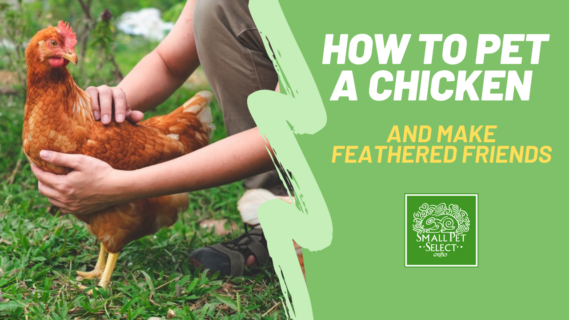It’s time to make friends with the flock. Chickens are a lot of fun and very social when they feel safe and respected. Knowing how to approach a chicken, read their body language, and how to pet a chicken properly will help interactions go smoothly and ultimately create a nice bond with you and your chickens!
Each chicken comes with their own unique personality. You might have some chickens that open up and are more comfortable with you than others and that is okay!
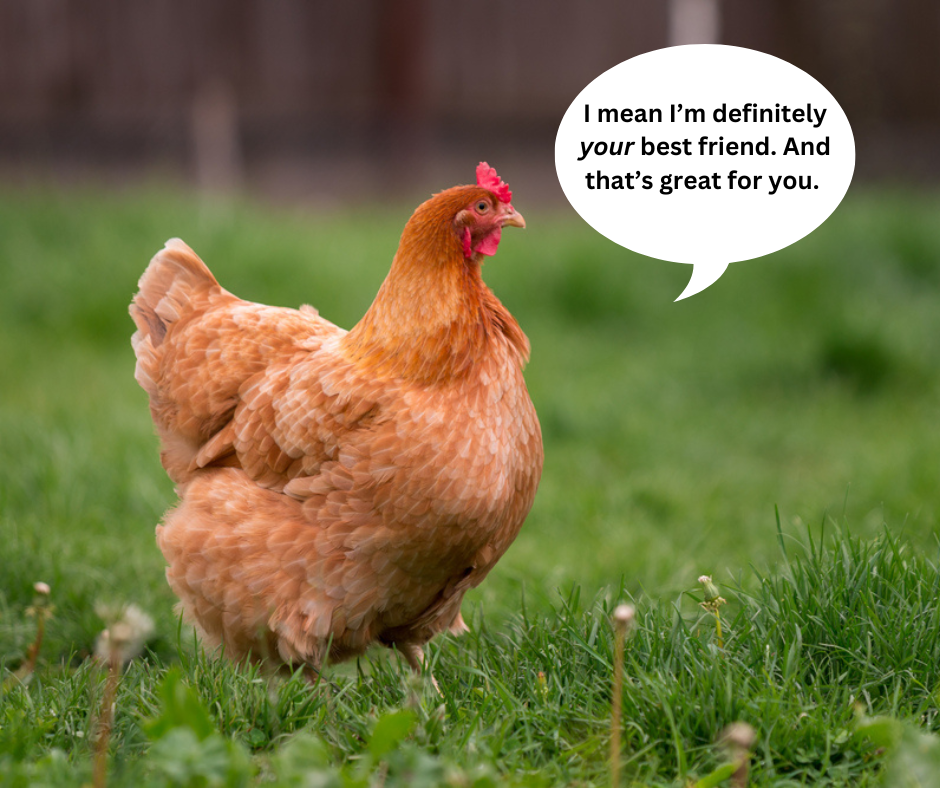
Over time they may feel more comfortable with you so keep up the patience and consistency!
What Your Chicken Is Trying To Tell You
Before we talk about interacting with your chickens, let's get into some of the sounds and body language that chickens use to communicate.
Clucking
When you hear a chicken cluck, it means they are content and relaxed. Clucking can also mean they found food, which is also good!
Squawking
Squawking is a chicken's way of communicating danger or discomfort. If you hear your chickens squawking, you need to find out the source of the stress. Squawking can be triggered by a predator or a conflict within the flock. Roosters sometimes crow to warn of danger but they also crow just to let everyone know that they’re there.
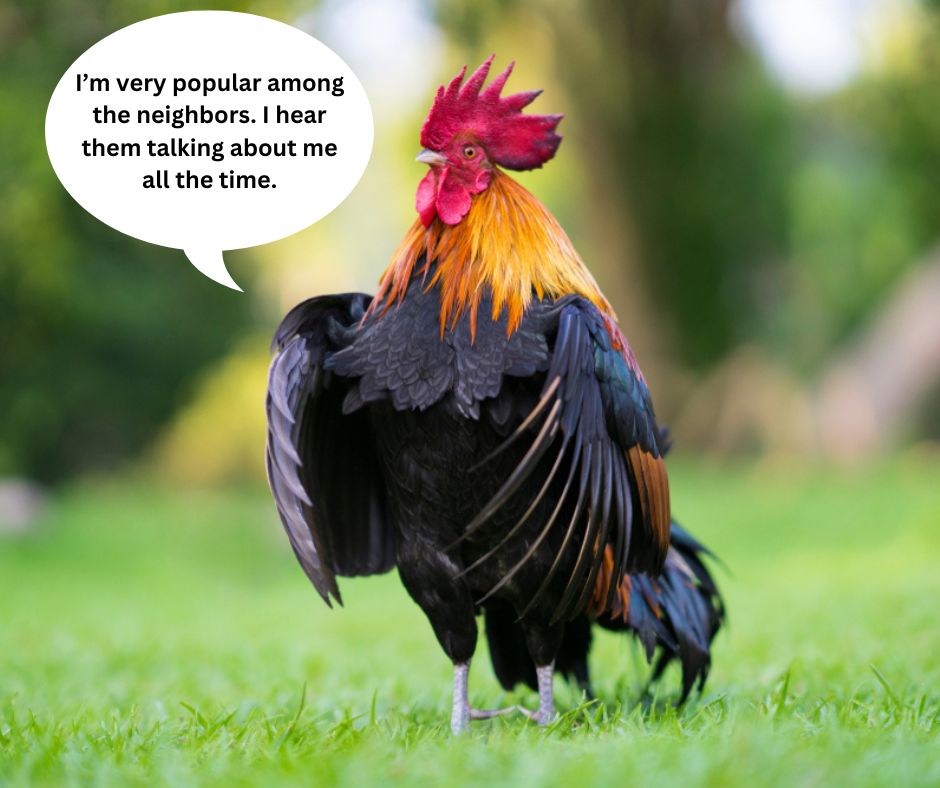
Flapping Their Wings
When a chicken flaps their wings it could mean they are excited or frustrated - two very different emotions! Context clues can help you understand what your chicken is trying to say. If they’re running away from you with some flapping of their wings you can assume they’re frustrated. If they flap their wings as they are coming towards you, they may think you’ve come with treats!
Wing Stretching
Wing stretching is different from flapping. A chicken does this to release tension or stretch out. It’s similar to stretching after you’ve been sitting down for a while.
Feather Puffing
Chickens puff their feathers for a few different reasons. When a chicken is cold they puff their feathers to trap air between them to try and warm up.
Chickens will also puff their feathers to show that they’re the boss. They may do this when they feel threatened.
How To Approach A Chicken
Never chase a chicken. No matter how excited you are to see them after a long day of work, don’t chase them! Chasing will make them uneasy around you the next time they see you as well. You don’t want to be seen as someone unpredictable that could charge at any moment.
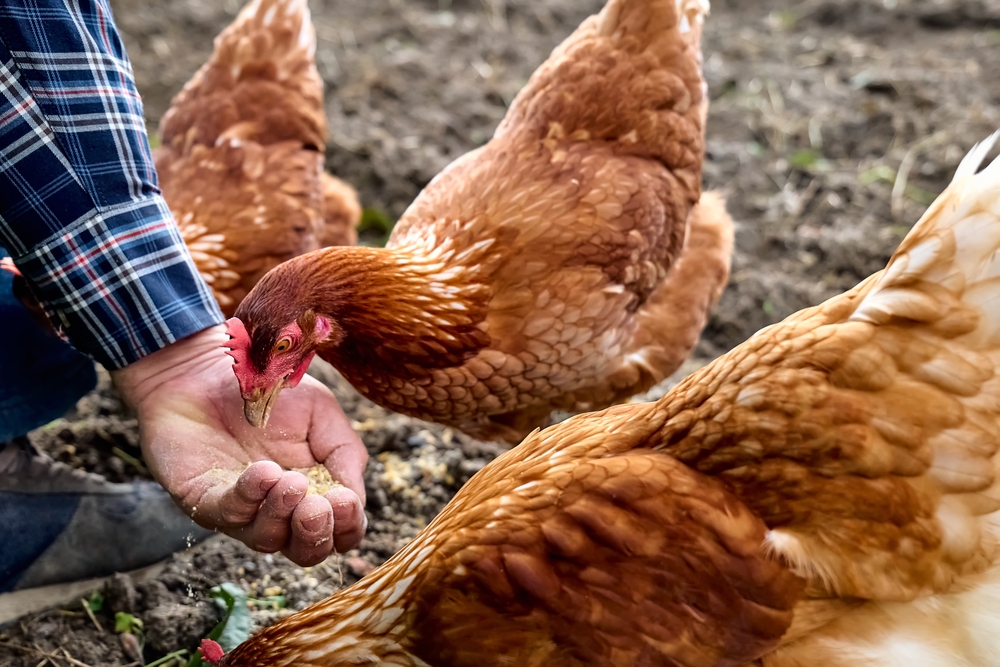
Walk over to the chickens and lower yourself down to their level. Offer them some food or a treat. Work on making yourself a safe place for the chickens to come to you.
How To Pet A Chicken
When you’re lowered to the chicken’s level, and everyone is calm, you can put one hand in front of the chicken to stop them and pet them on their back. Always pet soft and slow with the grain of the feathers.
When you’re holding a chicken, you can pet them on their back if you have one wing against your body and your other hand on the other wing. Talking softly when you're with your chickens will help them to feel calm and safe around you.
You can also use treats to help your chickens feel happy around you.
How To Pick Up and Set Down A Chicken
If you want to pick up a chicken it’s best not to single them out. If you can’t wait for them to come to you for a treat, then corral the flock to a corner and put your hands on the chicken’s wings to stop them. You can also stop them by putting a hand on their chest but when it comes time to pick up the chicken, put both hands over their wings and bring them close to your body.
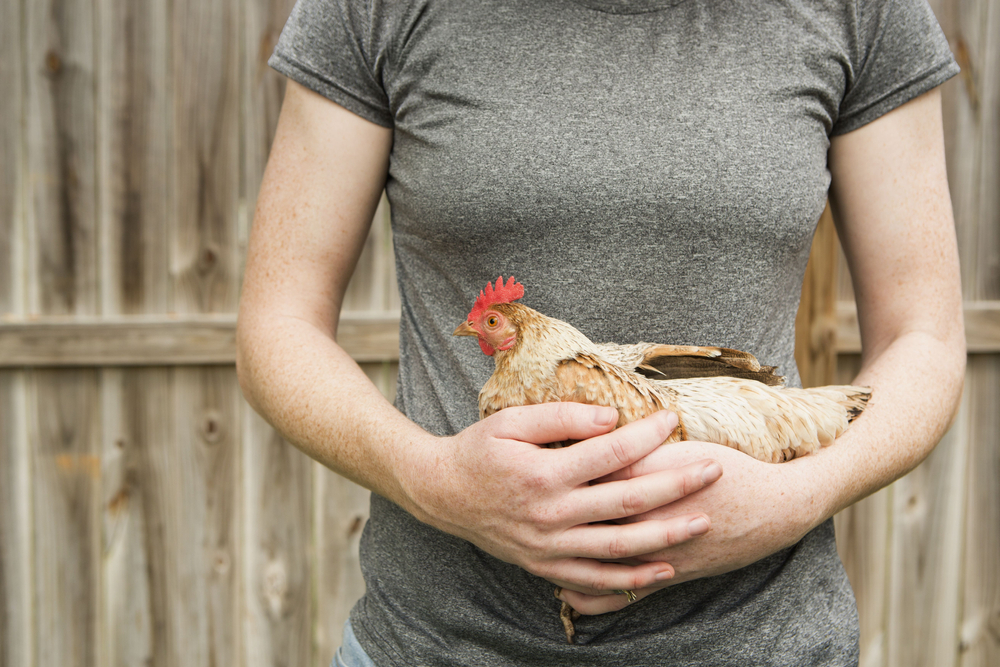
Never leave a wing out to flap. If the chicken starts to flap a wing, set them down and try again. Never pick up a chicken by their wings or under their wings. Never grab their head, neck, or feet. Cradle their body securely so they don’t fracture a wing or injure themselves in another way.
When setting the chicken back down make sure you keep their wings secure until their feet are safely on the ground!
Hygiene When Handling Chickens
Always wash your hands after handling chickens, their eggs, or working around their coop. Chicken droppings have germs that can spread around their environment and themselves. It's common for chickens to carry bacteria (Salmonella and Campylobacter) that can make humans sick.
Spending time with your chickens and petting them is a great time to check on your chickens and spot any signs of illness. These are signs that your chicken may be ill:
low energy
small appetite
swelling in their head, eyes, comb, or wattles
purple comb, wattles, or legs
sneezing, wheezing, or nasal discharge
diarrhea
lack of coordination
If you notice any of these signs of illness it's best to isolate the sick chicken and talk to a farm veterinarian to develop a good plan of action to treat your chicken.
Learning How To Pet A Chicken
The more time you spend with your flock the more relaxed your chickens will feel around you. You’ll notice you become more comfortable around them as well! Over time you will be a part of the flock and how to pet a chicken will feel natural.
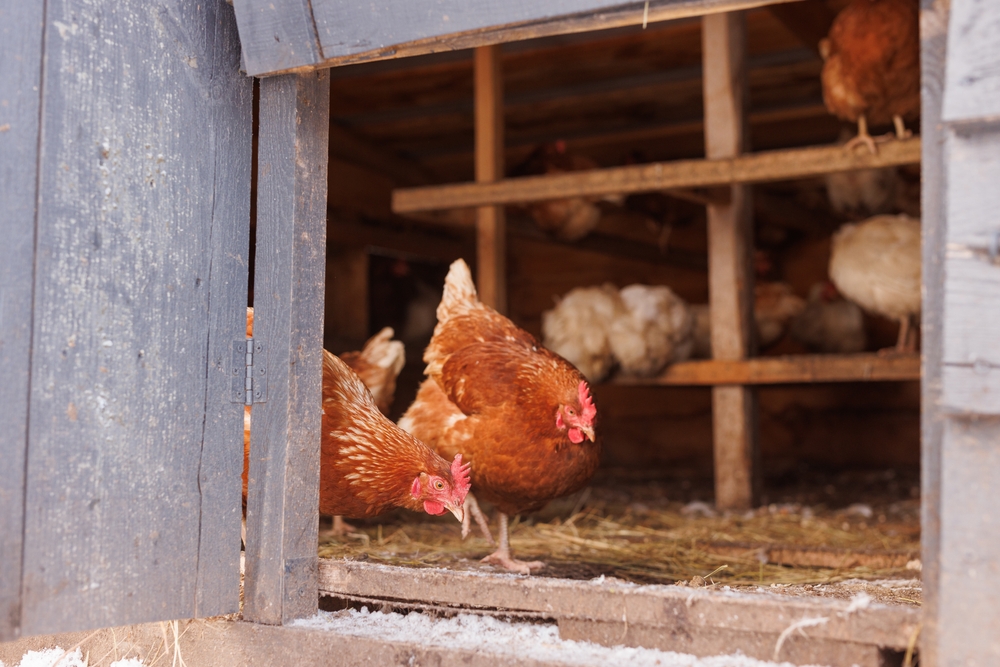
Just remember to be patient, go slow, and pet your chicken in the same direction their feathers lay. You are an important part of their environment after all. You keep their coop clean and their bellies full. Have fun together!
We are not veterinarians, and none of our information should be construed as veterinary advice.
Before adding any new product, please consult your exotic veterinarian. If your pet is acting unwell and you have concerns for their well being, please contact your vet immediately.



